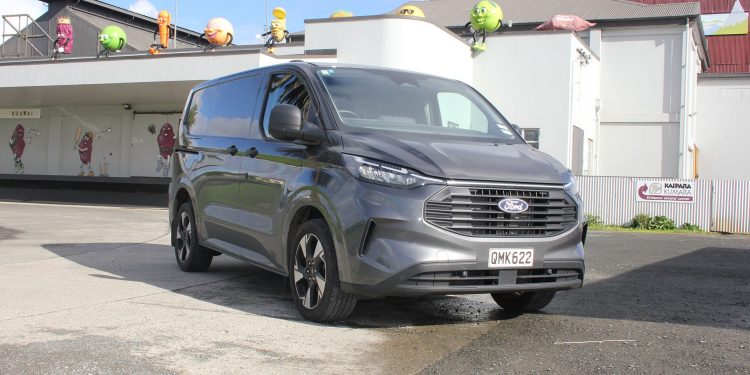2025 Ford Transit Custom SWB Review
Words and photos by Robert Barry
A friend who upcycles unwanted wooden furniture into colourful works of art needed to deliver two pieces to a client in Northland, giving us an opportunity to put Ford’s latest iteration of the Transit Custom 320 short wheelbase delivery van to work in a real-world scenario.
The second-generation Transit Custom family officially launched in Australasia just over a year ago and offers both a diesel engine as tested here, or a fully electric version in the panel van and the Tourneo people mover.
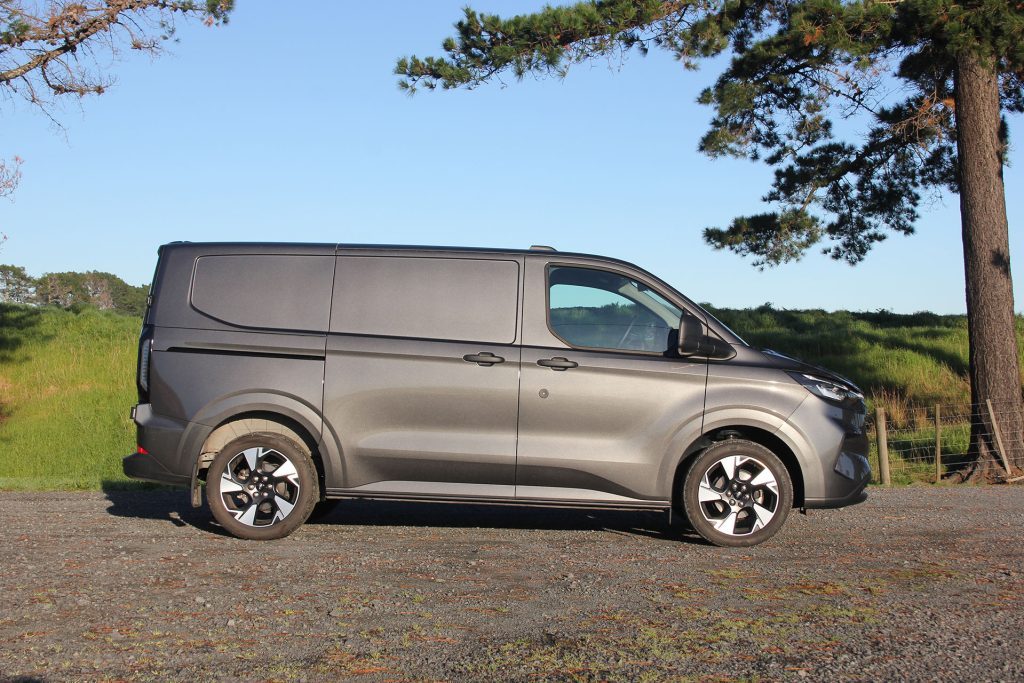
Competitors include the newly launched Fiat Scudo, the Hyundai Staria Load, the Mercedes-Benz Sprinter, the Renault Trafic, the Toyota Hiace ZR and the Volkswagen Transporter.
Ford New Zealand offers the Transit Custom van in short (SWB) and long (LWB) wheelbase configurations and in four colours. There’s also a Sport version available which offers a more aggressive look, upgraded upholstery and other cosmetic differences.
Our review vehicle arrived in the shade of Magnetic Grey, and was completely standard albeit for the fitting of a 17-inch alloy wheel and tyre package.
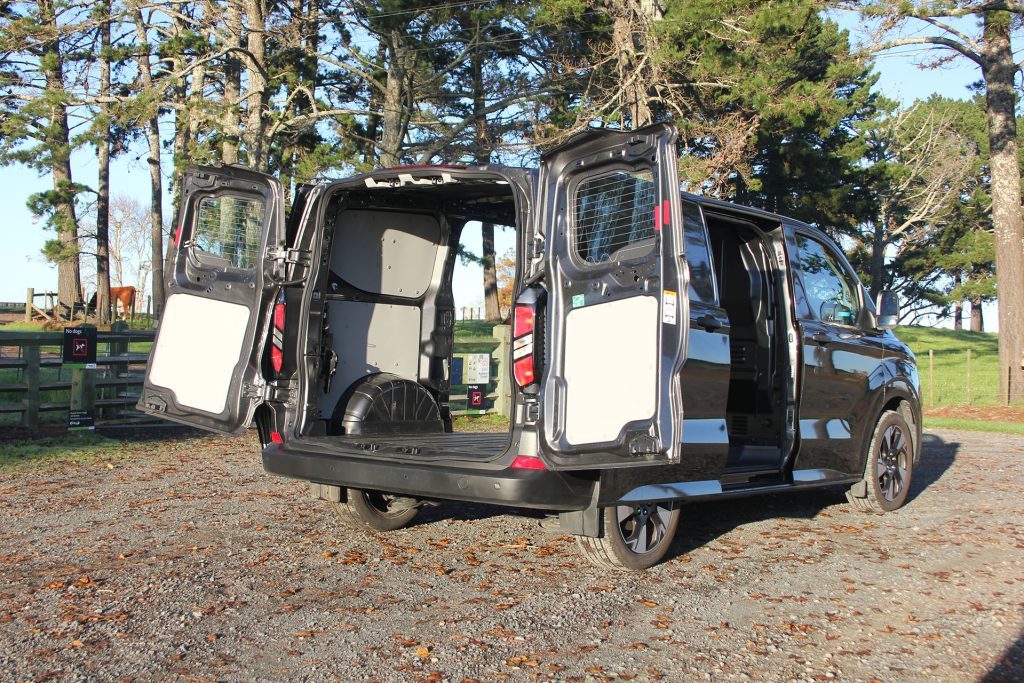
Transit Custom power and performance
All Transit Custom diesel models feature a 2.0-litre four-cylinder engine mated to an eight-speed automatic transmission. Outputs are 125kW and 390Nm, with a claimed combined fuel efficiency of 8L/100km.
The Transit Custom has four drive modes (Normal, Eco, Slippery and Tow) that adjust drivetrain parameters to suit a wide range of driving conditions. Our drive from Auckland to the Kaipara saw us toggling through the Normal, Eco, and Slippery modes as the rain descended on route and we found ourselves on some challenging unsealed roads as we neared our destination near Aranga Beach in Northland.
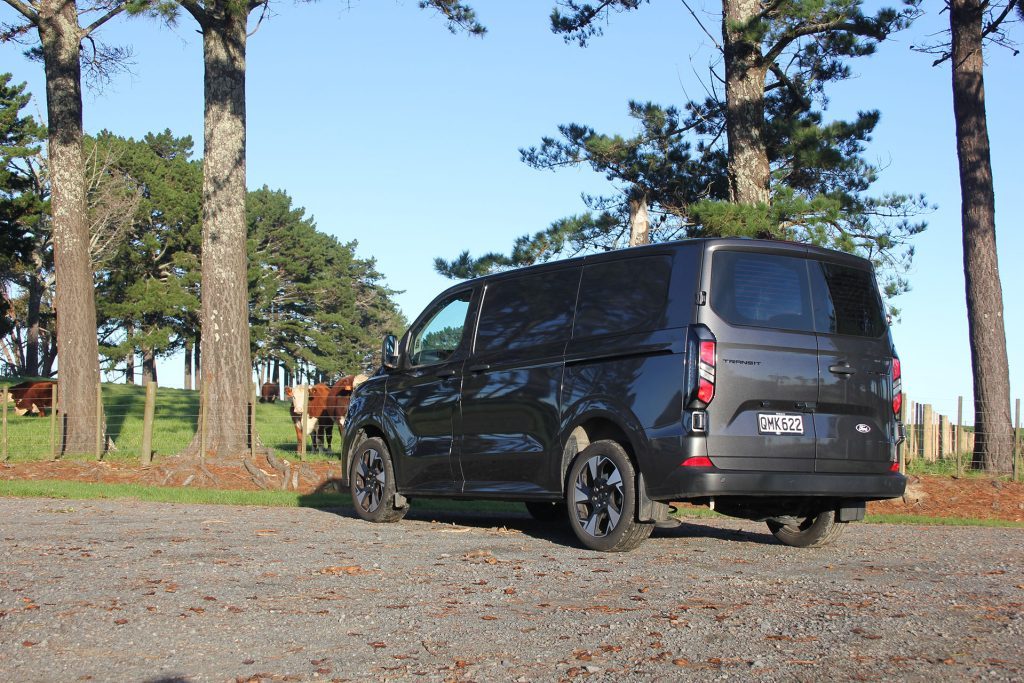
This new generation vehicle is not only lighter than the previous model but has independent rear suspension for improved comfort and handling. The maximum towing capacity has also increased, with customers able to haul 2500kg with both the SWB and LWB variants.
Transit Custom dimensions and capability
Ford has optimised the useability of this new generation Transit Custom, with a lower floor for improved ease of loading and unloading of cargo, along with an overall height under two metres to help access in height-restricted areas such as multi-storey car parks, garages, and underground loading bays. A new access step makes climbing up to the load compartment easier and assisting rear visibility is a rear camera with 180-degree wide viewing capability.
A walk-through, flat-floor making cross-cab access easy, significantly improves the vans usability. A column mounted shifter and electric parking brake allow the driver to enter and exit easily from both sides of the vehicle.
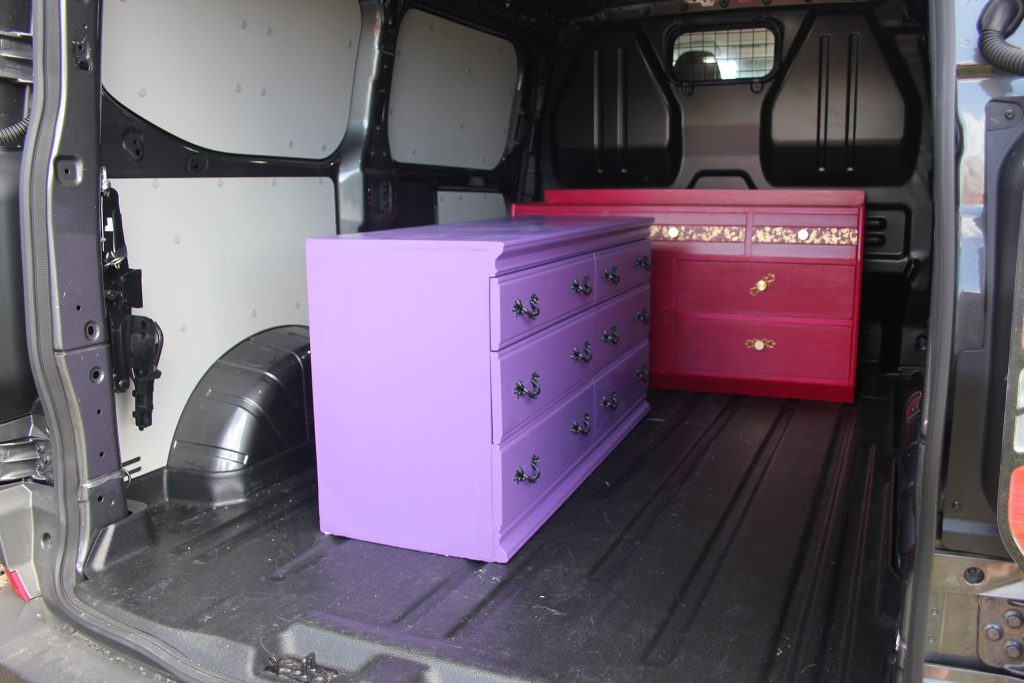
The front wheels and strut towers have also been moved further forward from the previous generation model, resulting in improved foot space and footrests for occupants, as well as a shorter front overhang for easier parking and maneuvering.
The Transit Custom SWB models offer a 1269kg payload capability, with 1223kg available for LWB models. Using the load-through feature under the passenger seats on the cabin, the Transit LWB has a maximum load length of 3450mm, with 3050mm available on the SWB model.
In total, 6.8 cubic metres of cargo can be loaded into the long wheelbase Transit Custom, while the short wheelbase can handle 5.8 cubic metres.
Both vans also come standard with the load area protection kit. This includes side and rear door protection as well as a molded load floor liner and in the SWB there are six tie down points to effectively restrain cargo.
Transit Custom specifications and technology
The wholly redesigned cabin is dominated by a new 13-inch central touchscreen, alongside a 12-inch partial digital instrument cluster.
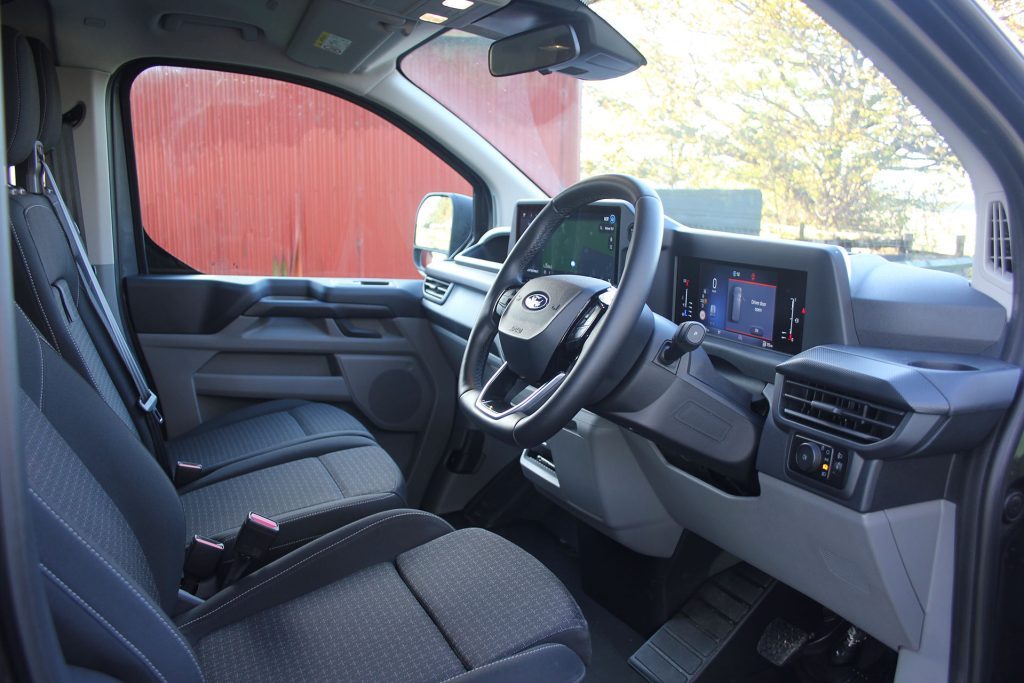
The central touchscreen runs Ford’s SYNC 4 infotainment system and has Sat-Nav as standard, along with wireless Apple CarPlay and Android Auto. Wireless phone charging is fitted as standard, and thanks to the embedded 5G modem Transit Custom owners will also benefit from the functionality of the FordPass app that helps them stay connected with their vehicle.
From a paired smartphone users can remotely lock and unlock their vehicle, check vehicle status and location and get service alerts.
Standard driver assistance technology includes adaptive cruise control, pre-collision assists with AEB and intersection assist, reverse brake assist and blind spot information system (BLIS) with rear cross traffic alert (RCTA) and BLIS assist.
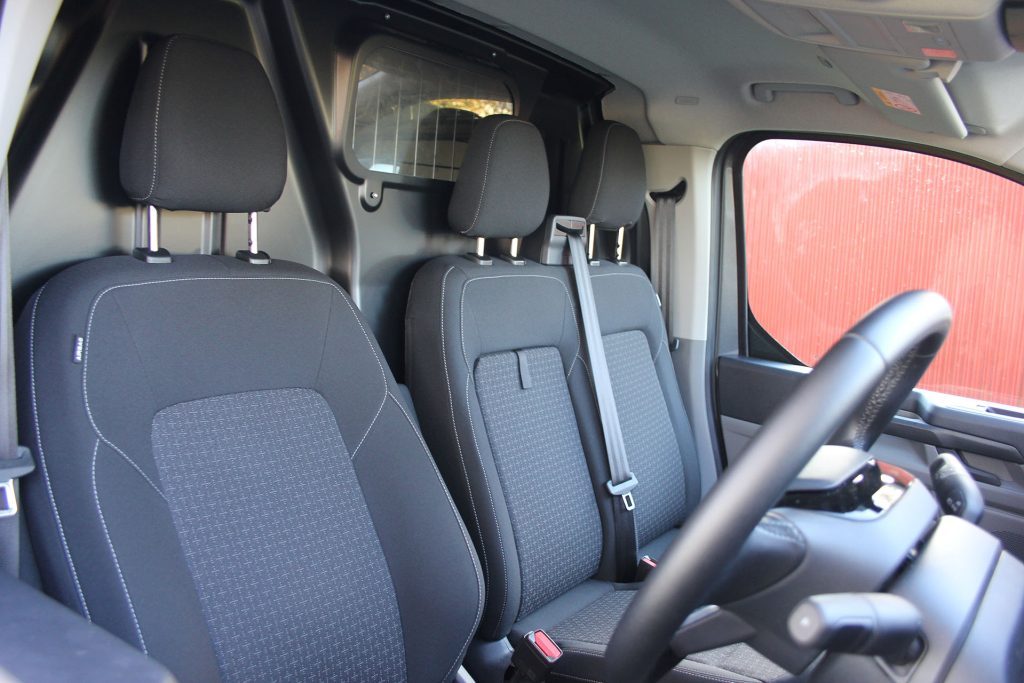
The new generation Transit Custom also introduces a roof-mounted airbag for the front passenger. Moving this airbag to the roof enables dashboard storage large enough to take a laptop or A4 file.
An exit warning system uses the Transit Custom’s rear sensors to play an audible alert when an object such as a bicycle is approaching while the vehicle door is being opened.
Transit Custom driving experience
The Transit Custom is a light commercial van that feels more car-like to drive thanks to the combination of the front wheel drive and independent rear suspension, which provides a comfortable ride when both full and unladen.
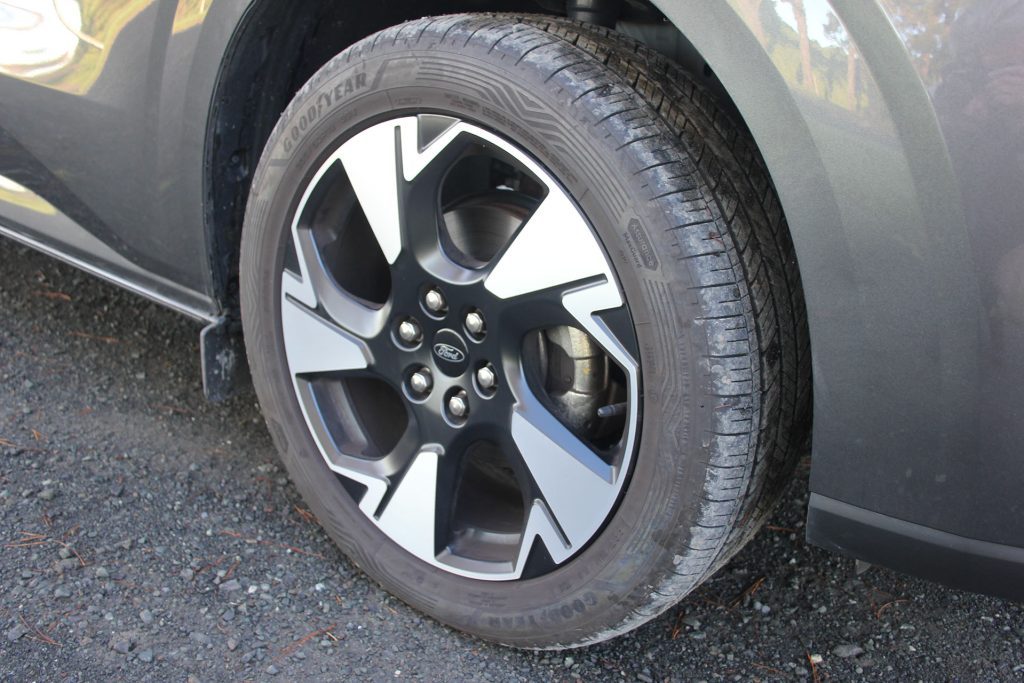
While it’s not the most powerful vehicle in the class, the 2.0-litre EcoBlue diesel provides more than acceptable response when needed and brisk acceleration thanks to the eight-speed transmission which seems to harness the right gear for the occasion.
Cruising at open road speed is a fairly relaxed experience with a muted hum from the engine and very little noise, vibration and harshness from the A pillar and the 17-inch wheel and tyre combo fitted. The turning circle is also commendably tight at 11.2 metres, and the steering feels perfectly weighted at all speeds.
Like all vans it provides a commanding view of the road ahead, and the large side mirrors provide a decent view of what’s behind, which is quite important in a vehicle without side glazing.
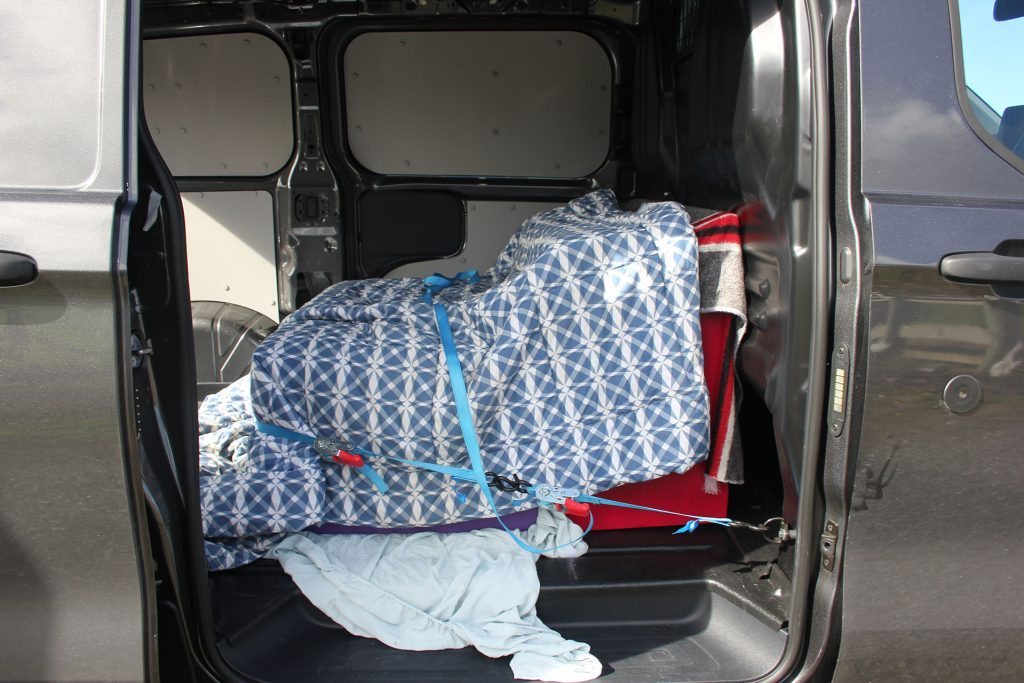
Long distance travel is made easier thanks to a multi-adjustable driver’s seat which offers lumbar adjustment and seat heating. The most outward passenger seat is also heated but sadly not the one closest to the driver.
We liked the smart design touches, such as the QI pad for a cellphone, the fold-away cupholder, the bottle holders molded into the door cards, and the drop-down table integrated into the backrest of the middle passenger seat. You could also store items out of sight underneath the base of the outer passenger seat, when not being used as a load through.
During our eight-hour day trip, we managed to better the quoted fuel efficiency with an average consumption figure of 7.5L/100km. The one curve ball thrown up on the journey was that the van decided its level of AdBlue diesel emission fluid was too low and a warning bell started chirping incessantly.
Our test vehicle had travelled 6000km and it seemed a bit odd that it was asking for a minimum of 3.5 litres and a maximum of 17 litres of AdBlue. Thankfully the local service station in Kaihu had two one litre bottles of AdBlue on the shelf and once topped up, we were back on the road without the repetitive nagging of the warning bell.
A wintery day trip to remote Northland to deliver furniture might not be everyone’s cup of tea, but AdBlue warning bell aside, the Transit Custom was the perfect van for the job and a very pleasant travelling companion.
Transit Custom specifications
Price: $66,990
Engine: 2.0-litre IL4 TDI, 125kW/390Nm
Transmission: 8-speed auto, FWD
Kerb weight: 1970kg
Payload: 1269kg
Towing capacity: 2500kg (braked)
Fuel tank: 70L
Combined fuel consumption: 8L/100km
Combined CO2 emissions: 214g/km


